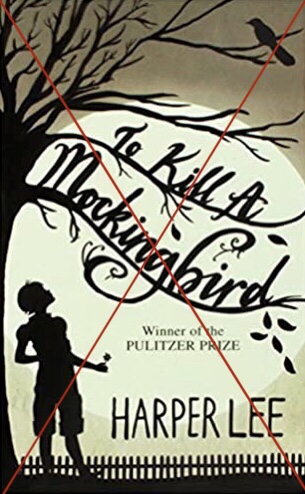Discriminatory Themes In Literature: Why They Must Be Taught Delicately

To Kill a Mockingbird, a tale of prejudices and controversy, remains one of the core books in students’ curriculum. Its involvement in education, along with several other discriminatory works, remains a shame to the ideas of teaching inclusivity and growth.
October 3, 2021
It is no secret that literature is controversial. No matter the genre or year it was made, there has always been, and will always be both negative and positive opinions surrounding works.
While some pieces are commonly debated past their time, others don’t age as well and normalize sexism, racism, homophobia, and countless other damaging ideas. Many of these works, however, are not only part of district curriculum, but are praised, and instill the harmful ideologies in students that those kinds of works ought to be viewed as superior.
Many view the teaching of books like To Kill a Mockingbird and short stories “Battle Royal” and “A Rose for Emily” as essential to understanding both our past as Americans and great literature. I would know, because I read, and was taught, all three.
But when approaching books that include horrific, discriminatory themes and language there should be a different way of teaching, which I have yet to see. These three stories are no exception to that.
It feels wrong to sit there and annotate, listening to how every metaphor and simile makes the author so clever and utterly genius while I read about them portraying black individuals as animals and women as sex symbols.
It is an author’s job, of course, to evoke emotion in a reader. But the way in which schools go about instructing these kinds of stories is completely tasteless and wrong.
Stories like To Kill a Mockingbird, “Battle Royal”, and “A Rose for Emily” are praised as timeless, credible pieces of literature that are written awfully well. Although the only correct descriptor I’m in agreement with is “awful”.
Should we remember our history? Recall slavery and undermining of women when it was at its worst? Absolutely.
But at the same time, we shouldn’t be picking apart the author like any other story, praising their literary style and celebrating them for it. That creates a false idea of the story, and makes the characters and their portrayal not only feel just, but commendable.
You cannot tell a student to read, analyze, annotate a story with these horrific details like they would with any other book. There needs to be an obvious boundary drawn, one that ensures that students will compliment discriminatory works with less enthusiasm, and separate the literary choices with the ideas the work holds itself.
Or better yet, how about the curriculum includes works that aren’t so discriminatory, pushing students away from harmful ideas and instead encouraging a more educated, inclusive thought. This would ensure students are moving forward, and expanding their minds and ideas with the rest of the world, as we ought to do.
If schools want the English Departments to teach America’s past, that is completely fine, but they need to do it right, or take students to history class instead.

